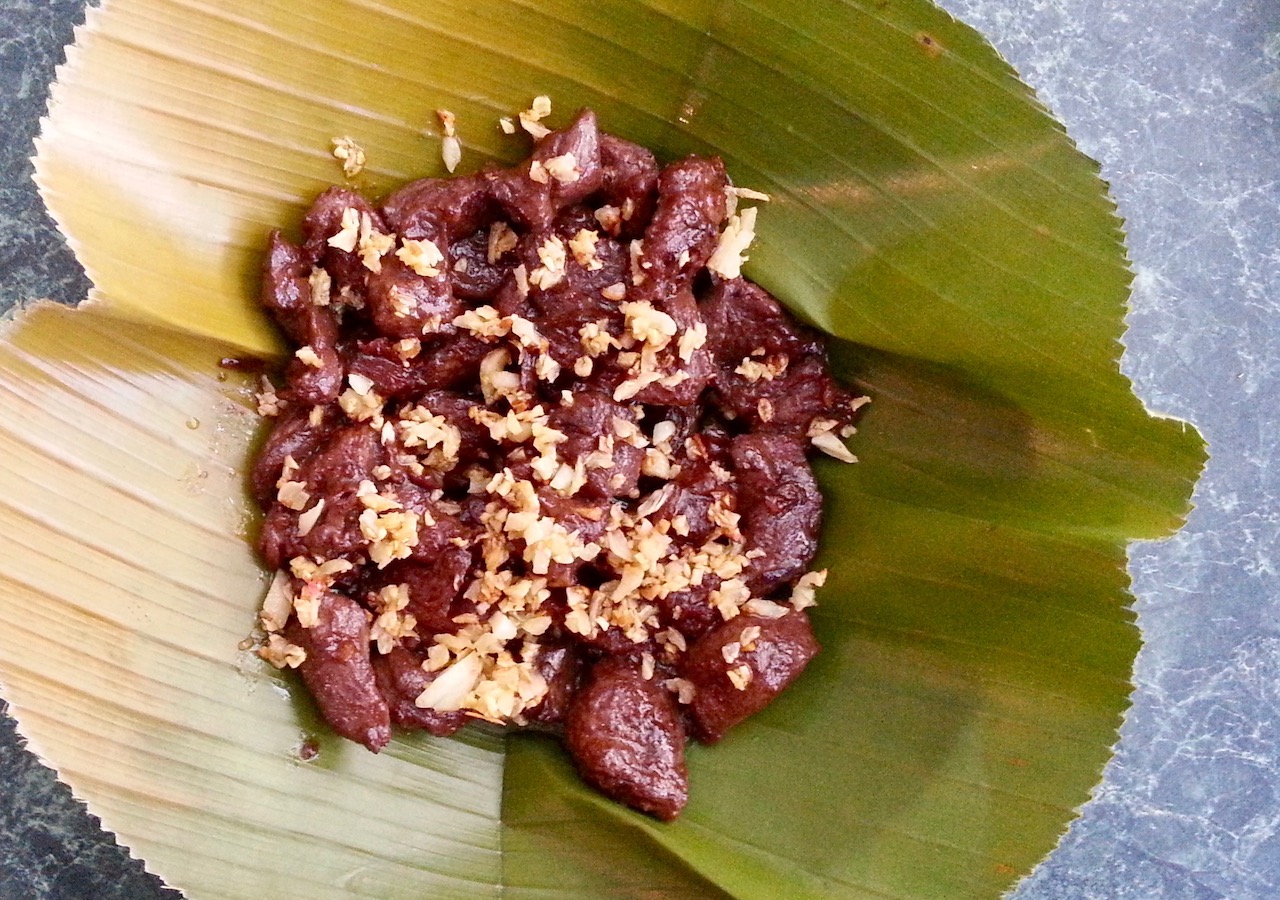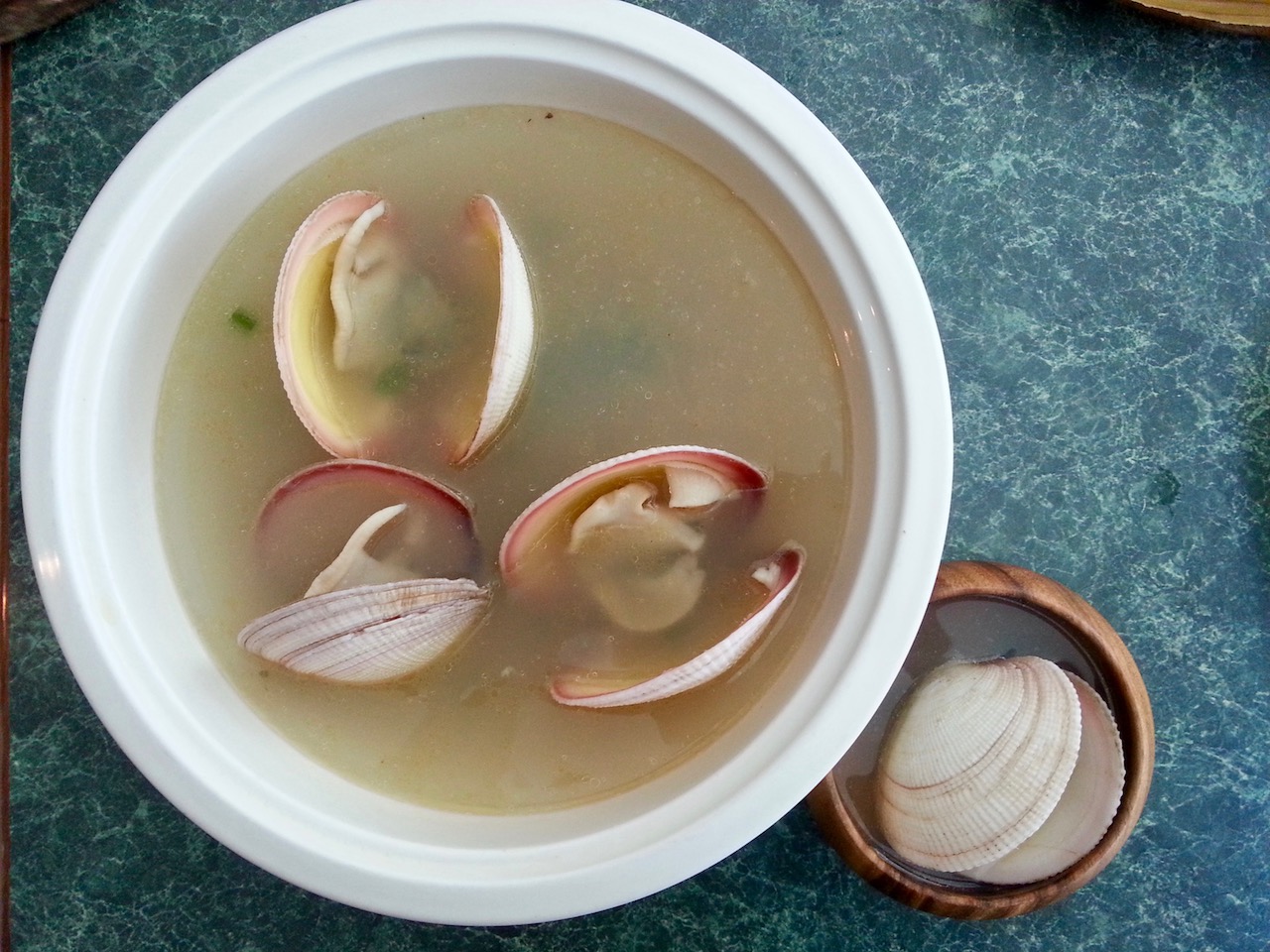Over Lunch at Kagay-Anon Restaurant, We Ask "What is Filipino Food?"
Russell Yee Awat, General Manager of Kagay-Anon Restaurant in Cagayan de Oro city, keeps a notebook in her purse describing things she’s eaten and what they taste like - particularly useful for field research, as on a recent trip to China to sample local variants of savoury hopia, a flaky pastry Filipinos have come to make their own.
Russell draws inspiration from her travels just as much as she does visiting markets and farms near Cagayan de Oro; she listens to what her customers want and then works that feedback into the restaurant’s menu. These suggestions are crucial to planning Kagay-Anon’s elaborate buffets (which cater for up to 5,000 guests) as well as daily restaurant operations; it’s a structure that’s allowed the business to grow, in 20 years, from a no-frills roadside stall into a restaurant that anchors all others in the city’s Limketkai shopping district, serving several hundred customers daily.
Doctors from major hospitals in town visit up to six times a week, Russell shares, and since the nearby Limketkai Luxe Hotel opened three years ago, walk-in customers have nearly tripled. “We’re always busy!” she says.
Along with the increase of walk-in guests, Russell has definitely noted more requests for “authentic Filipino food,” despite having three-quarters of their menu dedicated to Filipino classics such as sinigang na baboy and inihaw na bangus. But at staff meetings, when she asks what everyone considers ‘authentic’ local food, she says “Hala, walang nakasagot - kahit dito kami lahat isinilang!” (“No one could answer the question - even though we were all born here!”).
So what defines ‘authentic’?
“From the native (indigenous), Spanish to American cultures, there are plenty of influences to Filipino food,” Russell says. Authenticity, to her, isn’t something that automatically applies to the oldest dishes of a region, or the best-selling dish at a restaurant; but rather, about “how we claim that sinuglaw is ours,” for instance, referring to the grilled pork and ceviche-style fish dressed with suwa citrus and tabon-tabon fruit, two ingredients that grow wild and can only be found in Northern Mindanao.
I chime in to say that to me, food becomes ‘authentic’ when certain tastes that locals crave become part of that region’s culinary identity. Russell agrees with my theory.
“Mahirap i-please ang palate ng Pinoy, sa totoo lang,” she says, explaining how Filipino palates are hard to please. “Iba ang taste nating mga Pinoy. Hindi pwede ang shortcuts.” Our tastes pay incredible attention to detail, Russell elaborates, and shortcuts are unacceptable.
An array of flavours
https://www.instagram.com/p/BDoaDt-xnWp/
In an article titled An Incomplete Guide to Filipino Food Terms, cookbook author Gilda Cordero-Fernando defines the word malinamnam as “the taste of fresh, delicious food (from the Tagalog ‘namnam’)”. Though Fernando’s writing style is often more subdued for commercial audiences, she can’t help but add that one thing she wants to bitch about is “the attempt to infuse the Japanese word umami into our culinary stream. As if it were a superior word. As if we didn’t have our very own, very old, word for it—malinamnam! That’s how Tagalog words are lost.” I agree, and can’t help but chuckle every time I read this!
Biting into super tender chunks of marinated ostrich meat, I can’t imagine any other word to best describe the flavours of that salpicao. It’s an incredibly savoury taste; the soy sauce and calamansi marinade bolster the meat’s meatiness, and the once-sharp-but-now-mellow bits of browned native garlic really seep into every part of that ostrich tenderloin. It definitely tastes more like beef than poultry, and brings another Tagalog word to mind: nanunuot, referring to flavours that have penetrated their way fully into a final cooked dish.
Russell shares that in the early 90s, Kagay-Anon’s owners brought in ten pairs of ostrich from Australia to start the farm, and as they discovered the profitability and sustainability of ostrich farming, ostrich meat slowly found their way into the restaurant’s menu. “People ask, if you’re a Filipino restaurant, why is ostrich your specialty?” Russell says. “Really we’re the first to serve ostrich (in Cagayan de Oro), simply because of the farm.” An absolutely no fuss, straightforward way to answer the question, and one way to redefine food that’s locally grown. Kagay-Anon Restaurant also makes their own ostrich tapa - each batch cures for no longer than two days, Russell says.
Manamisnamis, according to Fernando, is “a mild sweet taste in very fresh seafoods like shrimps, crabs, oysters, clams.” (“Try to find an exact English word for that!” Fernando adds). Halaan, a local clam, is a briny yet subtly sweet shellfish, served at the restaurant with ginger and aromatics in a clear, restorative broth. Texturally, halaan was a little tougher than the pillowy soft imbao I tasted at Restaurant Damaso. Still very good, and a local catch available in markets and prepared often in these parts!
[embed]https://www.instagram.com/p/BCcWRDERnSf/[/embed]
Pinakbet is a mainstay on almost every Filipino restaurant menu across the country; in my mind, because it delivers the intensely savoury tastes Filipino palates look for. Paired with steamed white rice, bagoong (fermented shrimp paste) brings slowly braised bitter melon, squash, okra, eggplant, string beans and green chilies to crazy delicious heights. Sourcing the best vegetables are essential to pinakbet.
Lato (a seaweed known as sea grapes or green caviar) dipped in spiced tuba (coconut vinegar) was one of my favourite things to eat, a delicacy I longed for since I first came across a picture of those little green spheres last year. Served with minced red onions and sweet peppers, the tiny globes pop in your mouth and release a mildly salty brine that reminds you it’s truly an ingredient of the sea - minimally prepared, they’re a stellar starter and side to grilled fish.
The problem with a growing market for regional Filipino food
One interesting thing Russell and I talked about was the flip side to successfully promoting distinctly regional dishes, which use ingredients native to an area that may be in short supply. During an earlier trip to Cogon Public Market, for instance, my guides Nollie Arguelles and Mozart Pastrano talked about the technicalities around harvesting some local seafood and why they're still available at the market (we spotted some pagi, or sting ray, from one vendor at Cogon).
Back at Kagay-Anon, Russell also talked about the difficulty of sourcing fresh seafood for the restaurant, despite having multiple purveyors and suppliers (her suki, or regulars) in town. When the price of tuna and other fish in nearby General Santos city (the largest producer of sashimi-grade tuna in the Philippines) spike, local supplies are conversely affected - especially because suppliers know they can earn up to twice as much for the same cut of fish if they choose to send their product to Manila, where a renewed desire for truly ‘regional’ food demands the freshest, best quality tuna available (which, sadly, is still mostly sourced from GenSan).
Left with inflated prices, Russell has no choice but to purchase ingredients at a higher cost to fulfill customer demand - over time, increasing overall expenditure that leads to higher prices per menu item at the restaurant.
And the shortage isn’t just from the sea; it happens with local vegetables too. “Believe it or not, there was a time when string beans were over PHP 100/kg,” Russell says. “We had no choice but to purchase it because pinakbet HAS to have string beans. Otherwise our customers will call us out!”
Can we sustainably supply this renewed interest in regional fare?
Many locals beamed with pride when Chef Myrna Segismundo brought Cagayan de Oro’s homegrown sinuglaw to Madrid Fusion Manila for a main stage cooking demo in 2015. During research trips, Segismundo’s advice to local hoteliers and restaurateurs was to really focus on ingredients grown in the area and consequently feature them a lot more on their menus.
The question now rests on how locals tackle promoting ‘authentic’ Filipino food on a grassroots level, supported by sustainable farming methods and distribution practices.
To keep her customers happy, Russell shares that she’s had to be flexible (i.e. with introducing ostrich meat to the market) while establishing a local approach to cooking methods and tastes (turning unfamiliar ostrich meat into salpicao and tapa).
“Balikbayans look for ‘original, home-cooked food’ on the menu,” Russell says, “so you have to have those heritage recipes,” alongside newer takes on Filipino favourites.
Armed with the passion and determination to celebrate regional Filipino food, I’m with Russell and the rest of the Kagayanons on enjoying the foods of their land. Lami kaayo!




